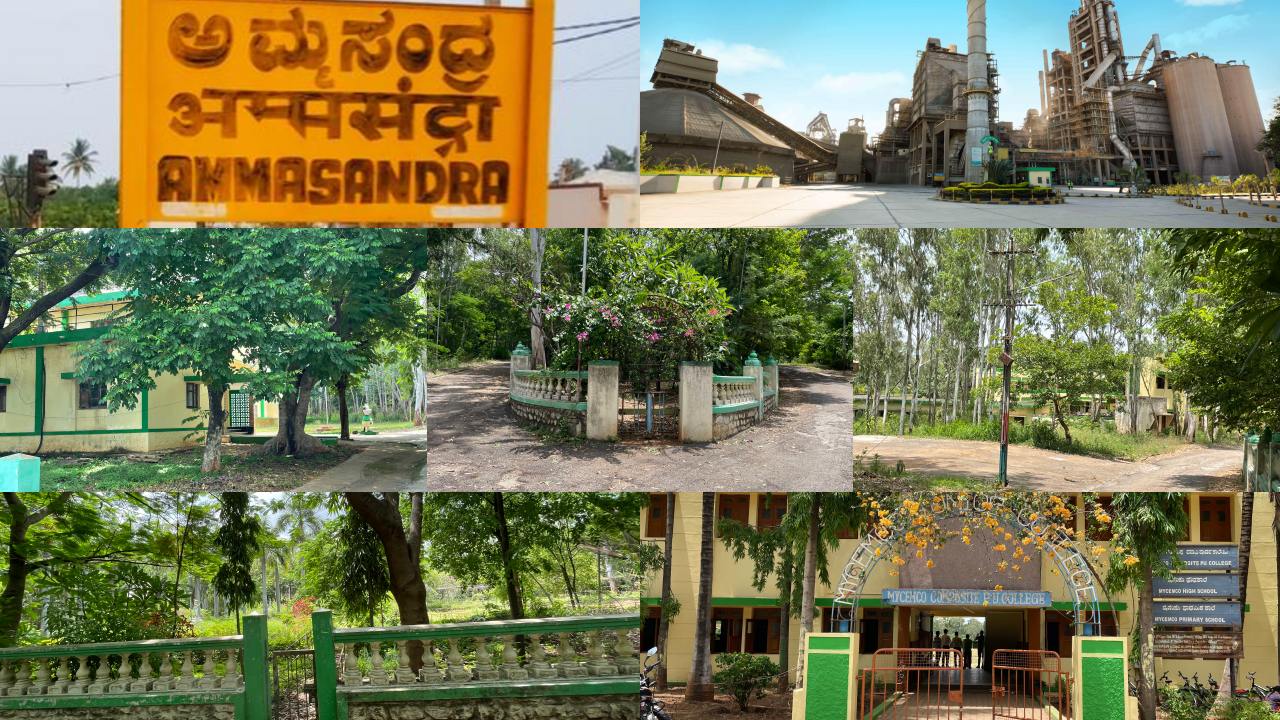Ammasandra Cement Plant: From Mysore Cements to HeidelbergCement India – A Legal and Historical Review
Editor: Chandan M
Published on: July 1, 2025, 11:38 a.m.

Tumakuru, Karnataka: The Ammasandra Cement Plant, located in the Tiptur Taluk of Tumakuru district, is one of Karnataka’s oldest industrial units. Established under the name Mysore Cements Limited in 1958, the plant has undergone several phases of development, expansion, and ownership change. Today, it operates as HeidelbergCement India Ltd, under the flagship Mycem brand. However, the legal and environmental compliance status of its mining lease — ML No. 2024 — continues to draw public interest, especially concerning forest clearance obligations and statutory lease extensions. Land Area and Mining Lease Coverage - The entire operational land linked to Ammasandra Cement Plant spans approximately 1,152 acres (or 466 hectares), which includes the mining lease area, plant premises, and worker colonies. Mining Lease Area: ~750 acres (303.47 hectares) were granted as Mining Lease No. 2024 on 24 February 1960 for limestone extraction. Plant and Colony Area: ~402 acres (163 hectares) are used for the cement plant, administrative buildings, employee housing, and supporting facilities. Historical Timeline of Development 1958 – Mysore Cements Limited was incorporated. 1960 – Mining Lease No. 2024 granted by Government of Karnataka (303.47 ha including ~19.38 ha of forest land). 1962 – Cement plant commissioned with a capacity of 1 lakh tonnes per annum (TPA). 1966 – Capacity doubled to 2 lakh TPA. 1978 – Capacity expanded to 6 lakh TPA. 1980 – First mining lease renewal granted, valid till 2000. 2005 – Second renewal application filed on 14 April 2005 for a 20-year term till May 19, 2026; lease continued under "deemed extension" per Rule 24A(6) of MCR, 1960. 1987–89 – Modernisation completed, including installation of a 6-stage preheater kiln. 2006 – HeidelbergCement acquired 54% stake in Mysore Cements. 2008 – Indorama Cement merged with MCL. 2009 – Renamed HeidelbergCement India Ltd; launched the Mycem cement brand. 2010 – Forest clearance expired; company filed for renewal under Form B. 2020 – Lease term technically expired but continued under MMDR Act statutory extension. Lease Validity Under MMDR Act, 2015 As per Section 8A(5) of the Mines and Minerals (Development and Regulation) Amendment Act, 2015, captive mining leases granted before 2015 are automatically extended until: 31 March 2030, or Completion of 50 years from original grant (whichever is earlier). Since ML No. 2024 was granted on 24 February 1960, its 50-year term expired in February 2010. However, being a captive mine, it qualifies for statutory extension and remains legally valid till 31 March 2030. Forest Clearance Issues Although the lease includes 303.47 hectares, it overlaps with 19.38 hectares of forest land, which requires clearance under the Forest (Conservation) Act, 1980. Stage-I Clearance: Granted on 14 March 2000 Stage-II Clearance: Granted on 1 September 2004, valid for 10 years till 13 March 2010 Form B Application: Filed on 10 March 2010 to renew forest clearance Status: As of 2020, no public confirmation exists that a renewed clearance was granted Without renewed clearance, mining on forest land after 13 March 2010 is not legally permissible, despite the lease's continued validity. As of 2020, the mining lease for Ammasandra Cement Plant (ML No. 2024) remains legally valid under Section 8A(5) of the Mines and Minerals (Development and Regulation) Amendment Act, 2015. This provision allows captive mining leases granted before 2015 to be automatically extended until 31 March 2030, or for 50 years from the date of the original grant, whichever is earlier. In contrast, the required forest clearance for mining operations on the 19.38 hectares of forest land within the lease area expired on 13 March 2010. Although the company submitted a renewal application in March 2010, no confirmation of fresh clearance has been made available in the public domain. As a result, mining on the forest land is not legally permissible without a valid and renewed forest clearance. However, operations on the remaining non-forest portion of the lease area continue to be lawful under the extended lease and relevant statutory provisions. Conclusion As of 2020, the Ammasandra cement plant’s mining lease remains legally active under Indian mining law due to statutory protections for captive mines. However, its ability to operate over forest land depends entirely on environmental compliance, which appears to be pending or unverified beyond 2010. While the plant remains an important industrial and employment hub for the region, transparency regarding forest clearance and compliance is crucial to ensure it operates within the bounds of law. Disclaimer: This report is based on publicly available data, legal documents, and official records available as of 2020. Readers, government officials, or stakeholders are encouraged to provide clarifications or corrections if any part of this article is inaccurate or incomplete. Verified inputs can be sent to the editorial desk for updating the report.